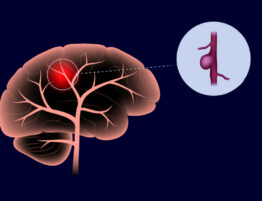In the realm of health, people associate the term “stroke” with the elderly. However, a growing concern is emerging as CVAs increasingly affect young adults. Dismissing the notion that CVAs exclusively target the aged, this article delves into the causes of stroke in young adults.
By shedding light on the most common triggers and the underlying factors contributing to this alarming trend, we aim to enhance awareness and advocate for a proactive approach towards prevention from a young age.
Join us. Read the article to the end to get all the valuable information for your health.
Young People and Stroke
Traditionally, CVAs were perceived as afflictions of the elderly. However, recent studies illuminate a disturbing trend. There’s a surge in CVAs among young adults. A CVA occurs when the blood supply to the brain is disrupted, leading to damage or death of brain cells. The elderly are more susceptible. However, recognizing that CVAs can impact individuals of any age is crucial. And understanding the unique risk factors for younger adults is imperative.
Most Common Cause of Stroke in Young Adults
Identifying the most prevalent causes of CVAs in young adults is essential for:
- Healthcare professionals.
- The general public.
Prominently, traditional risk factors that were typically linked to older age, such as hypertension, diabetes, and high cholesterol, are increasingly affecting individuals in their 20s and 30s, contributing to CVAs at an unexpectedly young age.
Another noteworthy cause of stroke in young adults is the rise in lifestyle-related risk factors. Sedentary lifestyles, poor dietary choices, and escalating stress levels have become more widespread among the younger population. These factors lead to:
- Obesity.
- High blood pressure.
- Other conditions significantly increasing the likelihood of CVA.
Furthermore, substance abuse, particularly smoking and excessive alcohol consumption, has been correlated with an elevated risk of CVA in young adults. The toxic effects of these substances contribute to the development of cardiovascular issues.
What Causes Strokes in Young Adults?
In the next block, we will delve into the intricate factors contributing to CVAs in young adults. Traditionally associated with the elderly, the incidence of CVAs among younger demographics has been on the rise. Understanding the unique triggers and predisposing elements is crucial. It’s for preventive healthcare and early intervention strategies.
From lifestyle to underlying conditions, the causes in young adults are different. Join us as we explore the intricate web of factors. Those can lead to this unexpected and serious health issue. We’ll shed light on the complexities that need awareness and preventive measures.
Traditional Risk Factors
They’re hypertension, diabetes, and high cholesterol, traditionally associated with older age. They increasingly affect young adults and are what cause strokes in young adults.
Lifestyle-related Factors
Sedentary lifestyles, poor diet, and high stress lead to obesity and high blood pressure. It significantly increases the likelihood of CVA.
Substance Abuse
Smoking and excessive alcohol consumption are usually correlated with an elevated risk. These substances contribute to the development of cardiovascular issues.
Atrial Fibrillation
Among the most common causes of stroke in young adults is irregular heartbeat. It can cause blood clots to form in the heart, leading to CVAs. Young adults with undiagnosed or untreated atrial fibrillation face an elevated risk.
Cervical Artery Dissection
Rare but significant, this occurs when there is a tear in the wall of the arteries supplying blood to the brain. It’s often associated with trauma or injury.
Genetic Factors
Predispositions to abnormalities in blood vessels or clotting disorders can increase the risk of CVA.
Obesity
The sedentary nature of life has led to an increase in obesity among young adults. It’s a well-established risk that is the cause of stroke in young adults.
Mental Health Issues
Anxiety and depression have been linked to an increased risk. Chronic stress can elevate blood pressure. And it contributes to the development of cardiovascular problems. It amplifies the chances of a CVA.
Hormonal Contraceptives
The use of hormonal contraceptives has been also identified as a potential risk factor. It’s particularly true among young women. The overall risk is relatively low. But consider individual health profiles when using contraceptives.
Overall Health Profile
Individual health profiles play a crucial role in what causes strokes in young adults. It includes genetic predispositions and family history. Regular health check-ups and professional advice are essential for tailored preventive measures.
How to Prevent Stroke from Young Age?
Preventing CVAs in young adults demands a comprehensive approach. It addresses lifestyle factors, risk awareness, and early detection of potential health issues:
- Healthy Lifestyle Choices. Encouraging young adults to adopt a healthy lifestyle is paramount. This includes maintaining a balanced diet rich in fruits, vegetables, and whole grains. Also, engage in regular physical activity. Avoiding tobacco products and limiting alcohol consumption are crucial steps.
- Regular Health Check-ups. Routine health check-ups can help identify and manage risk factors at an early stage. Monitor blood pressure, cholesterol levels, and blood sugar levels. It is especially essential for those with a family history of cardiovascular issues. Early intervention can prevent the cause of stroke in young adults.
- Stress Management. Chronic stress is a significant contributor to risk. Relaxing, yoga, and regular breaks from work can have a positive impact on mental and heart health.
- Awareness and Education. Raising awareness about the risk factors and warning signs of CVAs is crucial. Educating about the importance of recognizing signs like sudden numbness, confusion, or difficulty speaking can prompt seeking medical attention, potentially preventing severe consequences.
- Seeking Professional Advice. People with specific risk factors should seek guidance from healthcare professionals. Those factors are a family history of CVA or genetic predispositions. Genetic testing and counseling can help identify potential risks. And it allows for tailored preventive measures when it comes to young people and stroke.
Recognize, React, Recover: Early CVA Action in Young Adults
CVA often evokes images of older patients. However, it silently strikes young adults too. Classic signs like facial drooping and slurred speech can occur. However, younger sufferers may experience a different and surprisingly subtle presentation. Headaches, dizziness, vision changes, and severe fatigue are seemingly “normal” ailments. They could mask a brewing neurological storm.
The stakes are high. Unlike older adults, young brains have a remarkable capacity for recovery. But only if there is prompt treatment. Every passing minute without medical intervention can translate into permanent disability. It impacts their vibrant lives and futures.
That’s where the FAST acronym comes in when it comes to young people and stroke:
- Face drooping. Does one side of the face appear uneven or numb?
- Arm weakness. Can one arm be raised as high as the other, or does it feel weak or numb?
- Speech difficulty. Is speech slurred or garbled? Can they understand your questions?
- Time to call emergency services. Don’t wait for all signs to appear. If you notice any of these, even in isolation, dial for help immediately.
Remember, seconds matter. The faster you act, the greater the chance of minimizing damage and ensuring a full recovery. So, educate yourself and those around you. Talk openly about CVA. Dispel the myths. Empower young adults to be their own health advocates. Remember, “CVA can happen to anyone, at any time.” Be the difference, be the FAST hero.
Conclusion
Understanding the causes of stroke in young adults is vital. It’s for preventing this often devastating condition. Some risk factors are universal. However, some conditions and lifestyle choices contribute to a high risk. Healthy lifestyles, awareness, and regular health check-ups can mitigate the risk of CVAs. Taking these steps can empower people to focus on their health from a young age. It reduces the likelihood of falling victim to this serious medical condition. For your health, read our articles about the meaning of dementia, stroke, Alzheimer’s disease, etc.
FAQ
Are young people at risk for strokes?
Yes, young people are at risk for strokes. And factors like hypertension, obesity, and lifestyle choices contribute to an increasing risk.
What lifestyle changes can reduce the risk of stroke in young adults?
A healthy lifestyle, a balanced diet, regular exercise, and stress management reduce the risk of stroke.
How do medical conditions contribute to stroke risk in young adults?
Atrial fibrillation, cervical artery dissection, and hormonal imbalances can contribute to stroke risk. It emphasizes the importance of early detection and management.
Can genetic factors cause strokes in young adults?
Yes, genetic factors can cause strokes in young adults. Predispositions to abnormalities in blood vessels or clotting disorders may elevate the risk. It underscores the significance of genetic testing and counseling for tailored preventive measures.













Please, leave your review
Write a comment: